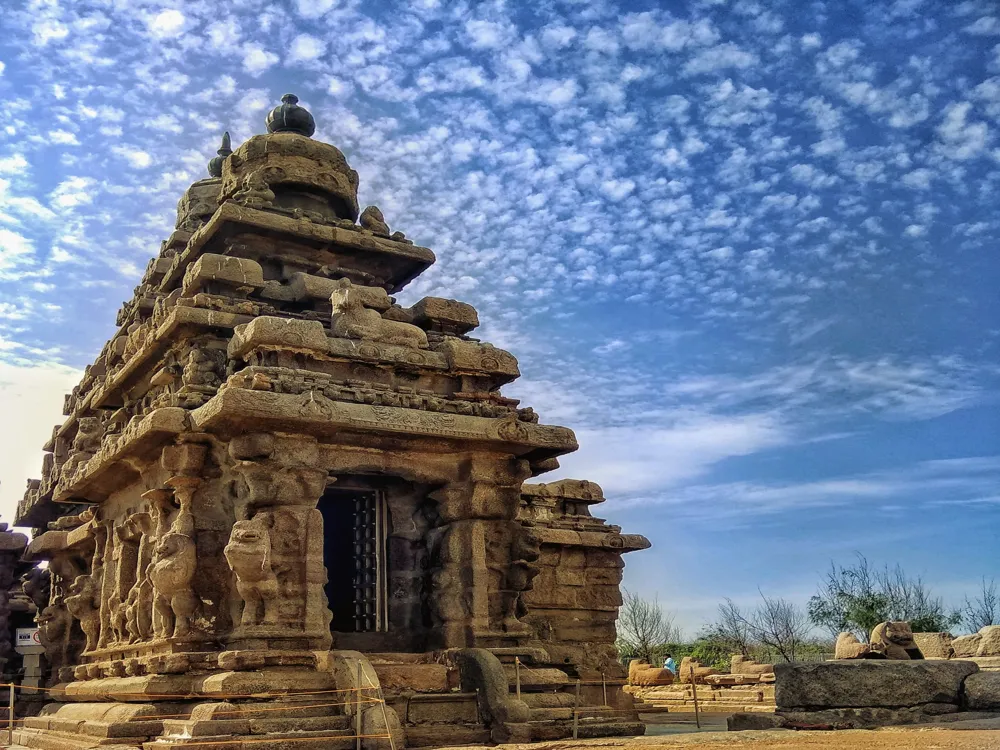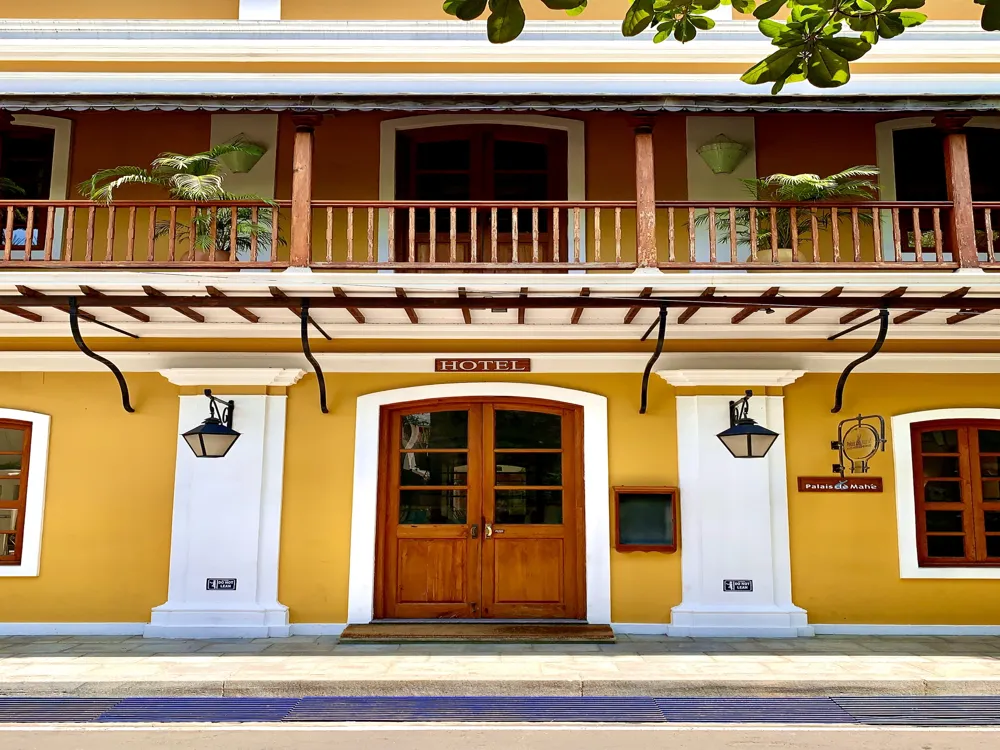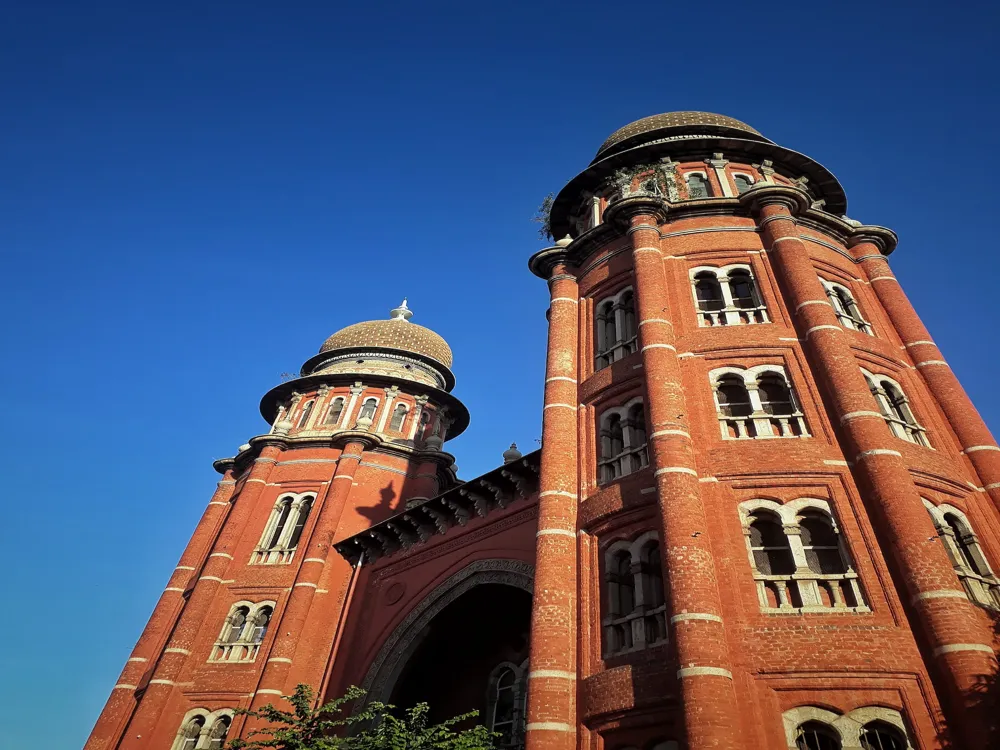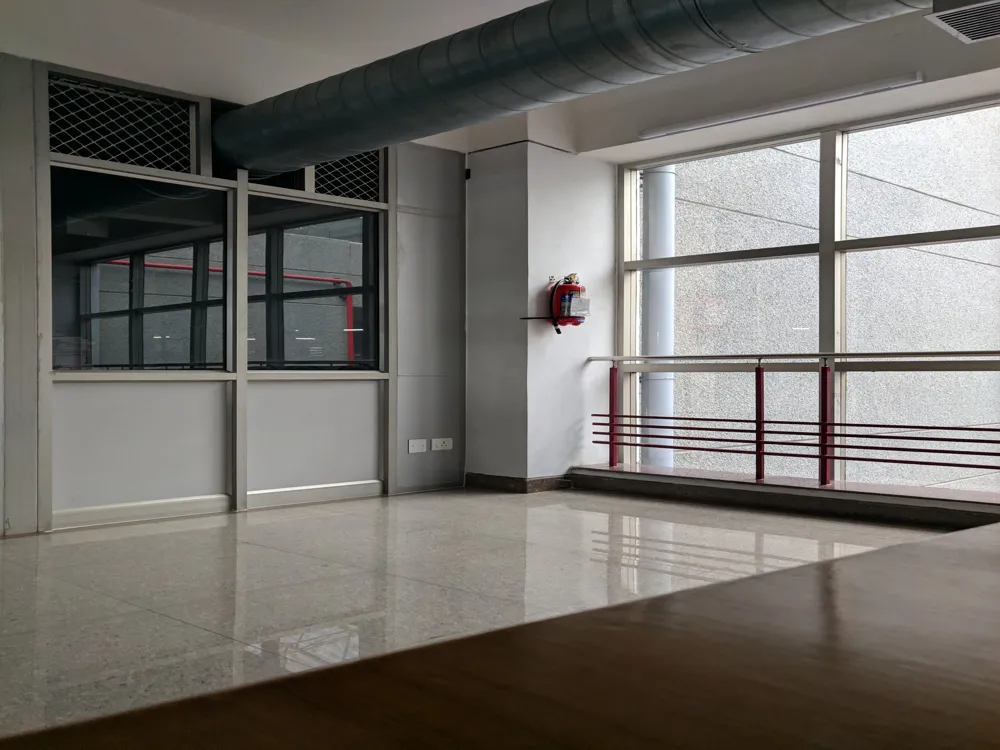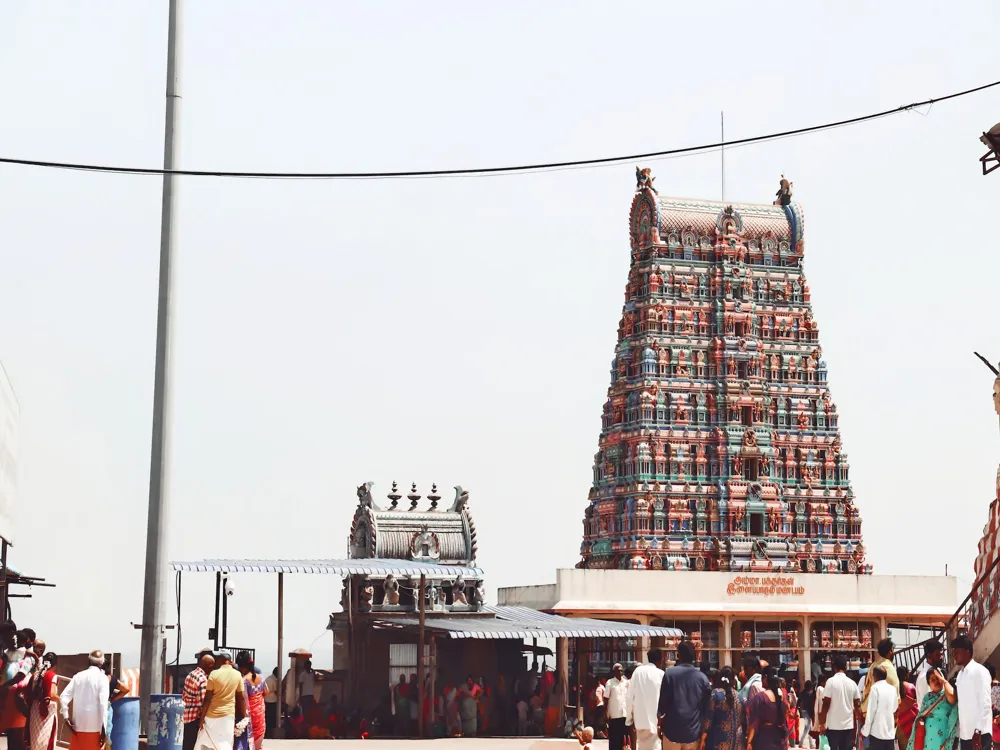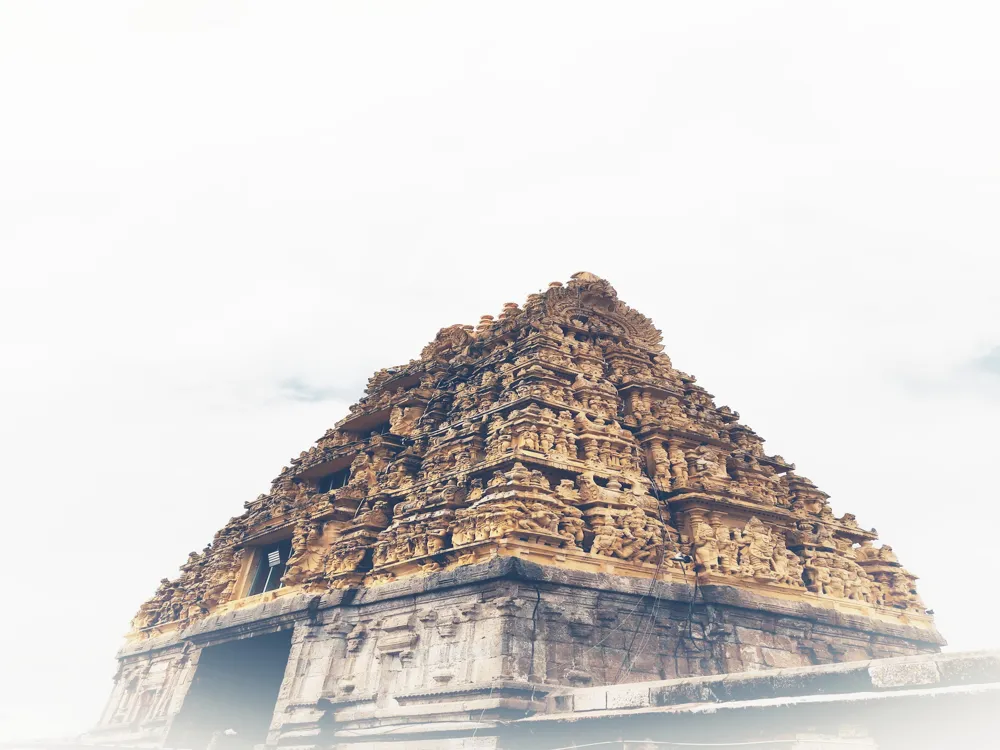Nestled in the coastal town of Mahabalipuram in Tamil Nadu, India, the Varaha Cave Temple stands as a testament to the architectural prowess of the Pallava dynasty. Carved in the 7th century, this temple is an exquisite example of Indian rock-cut architecture and a significant part of the UNESCO World Heritage Site group of monuments in Mahabalipuram. The Varaha Cave Temple is renowned for its intricate carvings, detailed sculptures, and historical significance, drawing visitors from across the world to witness its ancient beauty. As you step into the premises of Varaha Cave Temple, you are immediately transported back in time. The temple, primarily dedicated to Lord Vishnu, showcases the Varaha avatar (boar incarnation) rescuing goddess Earth, depicted in a magnificent sculpture. What makes the Varaha Cave Temple unique is not just its religious significance but also its contribution to the understanding of ancient Indian art and culture. The temple's walls and pillars are adorned with finely carved sculptures of gods, goddesses, and mythological creatures, each narrating a story from Indian mythology. The architectural design of the Varaha Cave Temple is a study in ancient Indian aesthetics. The temple is carved out of a single large rock, and its facade is adorned with four intricately carved pillars, each standing as a testament to the Pallava artisans' skill. The mandapa (hall) of the temple, with its rock-cut architecture, provides insights into the architectural evolution during the Pallava period. This temple is not just a religious site; it is a canvas that captures the essence of life and spirituality during the 7th century. The legacy of the Varaha Cave Temple goes beyond its architectural marvel. It has been a source of inspiration for historians, artists, and architects worldwide. The temple serves as a living museum, offering insights into the religious, cultural, and social aspects of the period in which it was built. A visit to the Varaha Cave Temple is not just a journey into the past; it is an experience that bridges centuries, offering a glimpse into the rich tapestry of Indian history and heritage. The Varaha Cave Temple is a masterpiece of Pallava architecture, reflecting the sophistication and skill of ancient Indian artisans. The temple's design is characterized by its simplicity and elegance, with a focus on intricate carvings rather than ostentatious ornamentation. The rock-cut temple is an example of early Dravidian architecture, which later evolved into the grand stone temples seen across South India. One of the distinguishing features of the Varaha Cave Temple is its façade, which is supported by four pillars and two pilasters. These pillars are unique, with lion-shaped bases, known as Yali, a typical feature of Pallava architecture. The Yali pillars are not just structural elements; they are also symbolic, representing strength and power. The detailed carvings on these pillars depict scenes from Hindu mythology, each telling a story of gods, goddesses, and mythical creatures. Inside the temple, the main shrine is dedicated to Lord Vishnu in his Varaha avatar. The portrayal of Varaha is not just a religious icon; it is a marvel of sculpture art. The precision and attention to detail in the carving of Varaha rescuing Bhudevi (the Earth Goddess) are remarkable. Surrounding the main deity are various other sculptures, each carved with equal finesse, depicting different deities and mythological scenes. The architecture of the Varaha Cave Temple is not just about the grandeur of its sculptures. It also lies in its structural design. The choice of rock, the method of carving the cave out of a single rock, and the spatial arrangement within the temple are indicative of the advanced architectural understanding of the Pallava dynasty. The temple's design ensures natural light illumination, enhancing the beauty of the sculptures and creating an ethereal atmosphere within the cave. The Varaha Cave Temple's architecture is a harmonious blend of artistic expression and engineering prowess. Its construction required not just artistic skill but also an understanding of geology, physics, and mathematics. The temple stands as a testament to the advanced level of knowledge and craftsmanship in ancient India and continues to be a source of inspiration and admiration for modern architects and historians. The ideal time to visit the Varaha Cave Temple is between October and March when the weather is pleasant. Summers in Tamil Nadu can be quite hot, making it less comfortable to explore the temple during the day. Visitors are advised to dress modestly, keeping in mind the temple's religious significance. It's also recommended to remove footwear before entering the temple premises as a sign of respect. Photography is usually allowed in the temple area, but it's advisable to check for any specific restrictions. Using flash photography inside the cave can damage the ancient sculptures, so it's better to avoid it. Opting for a guided tour can enhance your experience, as knowledgeable guides provide insights into the temple's history, architecture, and cultural significance. The temple is accessible for most visitors, but those with mobility issues should be aware that there are some uneven surfaces and steps. Mahabalipuram is well-connected by road, and the Varaha Cave Temple is easily accessible from Chennai, the nearest metropolitan city. Visitors can reach Mahabalipuram by bus, car, or taxi from Chennai, which is approximately 60 kilometers away. For those preferring public transport, regular bus services are available from various parts of Chennai to Mahabalipuram. Additionally, renting a car or hiring a taxi can provide more flexibility and convenience in exploring the town and its surrounding attractions. Read More:Overview of Varaha Cave Temple, Mahabalipuram
Architecture of Varaha Cave Temple
Tips When Visiting Varaha Cave Temple
Best Time to Visit
Dress Code and Etiquette
Photography Guidelines
Guided Tours
Accessibility
How To Reach Varaha Cave Temple
Varaha Cave Temple
Mahabalipuram
Tamil Nadu
NaN onwards
View mahabalipuram Packages
Mahabalipuram Travel Packages
View All Packages For Mahabalipuram
Top Hotel Collections for Mahabalipuram

Private Pool

Luxury Hotels

5-Star Hotels

Pet Friendly
Top Hotels Near Mahabalipuram
Other Top Ranking Places In Mahabalipuram
View All Places To Visit In mahabalipuram
View mahabalipuram Packages
Mahabalipuram Travel Packages
View All Packages For Mahabalipuram
Top Hotel Collections for Mahabalipuram

Private Pool

Luxury Hotels

5-Star Hotels

Pet Friendly







